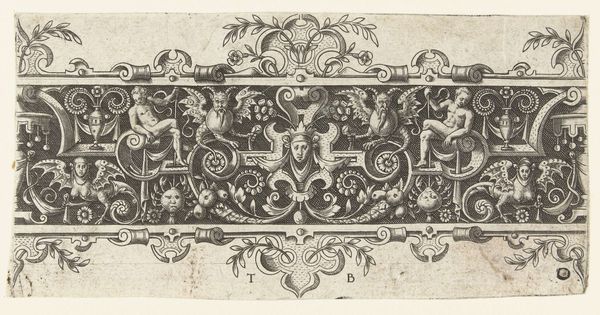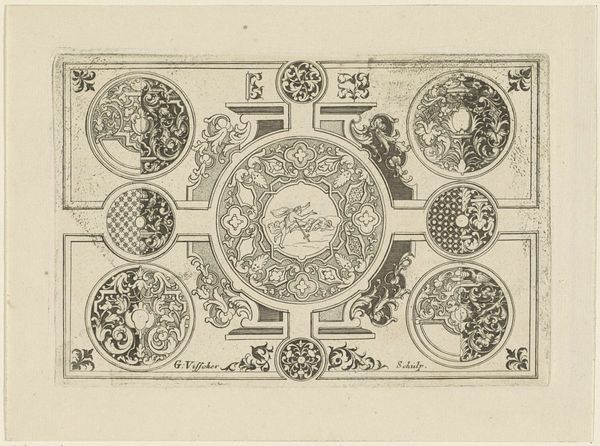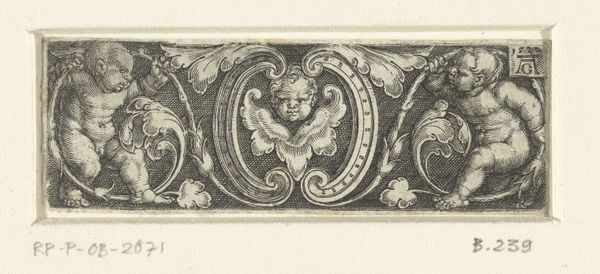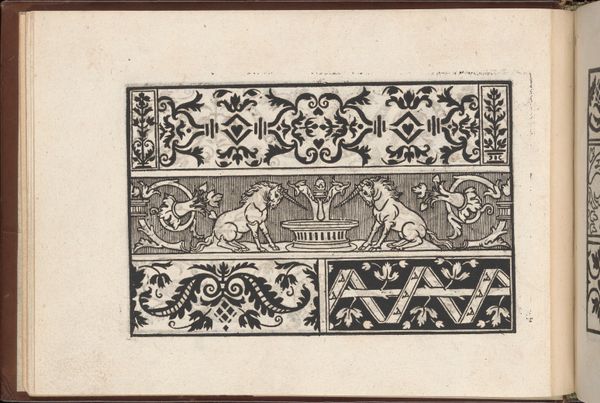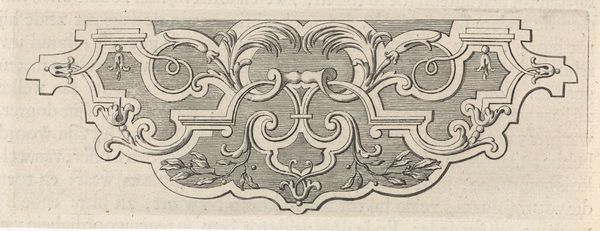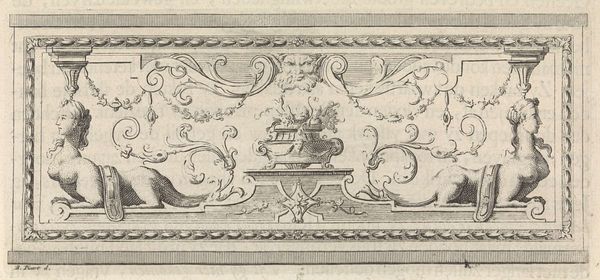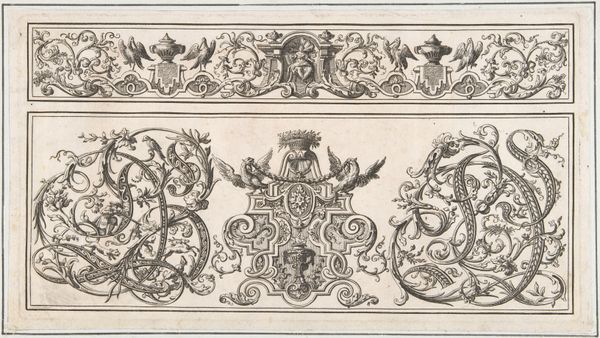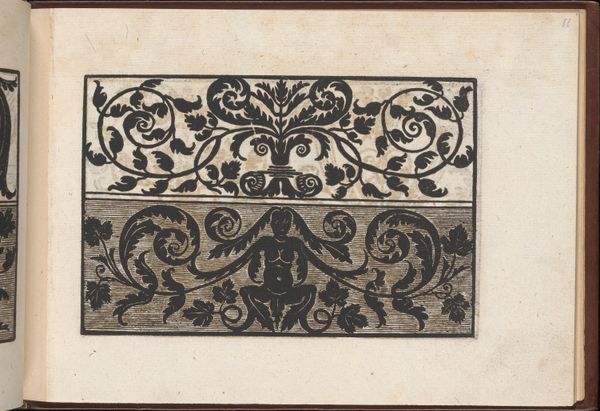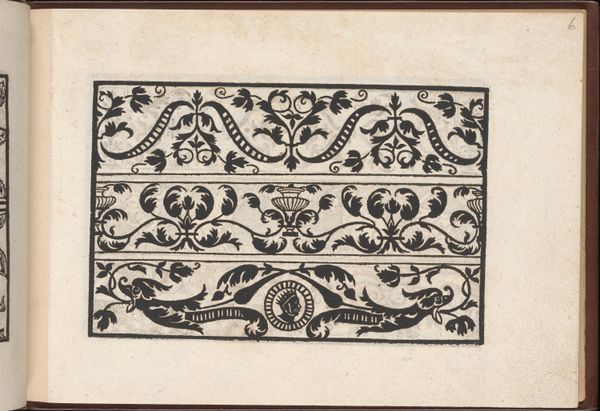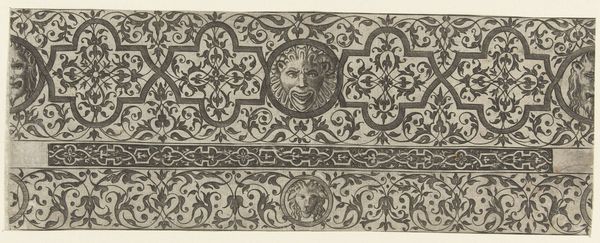
drawing, paper, ink
#
drawing
#
pen drawing
#
pen sketch
#
old engraving style
#
hand drawn type
#
paper
#
11_renaissance
#
personal sketchbook
#
ink
#
hand drawn
#
geometric
#
pen-ink sketch
#
line
#
pen work
#
sketchbook drawing
#
decorative-art
#
sketchbook art
Dimensions: height 33 mm, width 221 mm, height 27 mm, width 221 mm
Copyright: Rijks Museum: Open Domain
Curator: What a fascinating drawing! It is entitled "Vier friezen met arabesken," which translates to "Four Friezes with Arabesques," created sometime between 1550 and 1580 by an anonymous artist. The work employs ink on paper. Editor: The immediate feeling I get is one of ornate intricacy. Look at those swirling, interwoven patterns. It's quite striking how such precise line work results in a seemingly organic, flowing design. Curator: Precisely. These types of ornamental designs were incredibly popular during the Renaissance, reflecting the era’s renewed interest in classical art and architecture. Ornament was an important carrier of meaning. Its widespread presence speaks to the values and aesthetics of the time. It served purposes from the grand to the intimate, embellishing palaces, books and everyday objects. Editor: The artist has really captured the essence of arabesque – those complex geometric patterns and flowing lines that are suggestive of plant forms. Observe the faces interspersed throughout the pattern—quite subtle, and almost lost amongst the swirling foliage. I am wondering what is their relation to the frieze itself, which seems almost complete on its own. Curator: The presence of these grotesque faces adds another layer. Masks like these weren’t simply decorative but acted as protective devices intended to ward off evil, they had social and apotropaic functions. The printing revolution allowed for the wider circulation of design and patterns and ideas that affected cultural patterns and visual consumption across various social groups. Editor: The work is incredibly well-preserved. Imagine, these lines were laid down nearly half a millennium ago. You can almost see the artist's hand moving across the page, carefully crafting each element. Curator: Indeed. Reflecting on "Vier friezen met arabesken" is to gain a glimpse into a world where ornament wasn't just decoration, it was embedded with deeper cultural meaning. Editor: For me, these arabesques reveal a careful dance between order and spontaneity, evidence of the universal desire to find beauty in the balance of form and line.
Comments
No comments
Be the first to comment and join the conversation on the ultimate creative platform.
